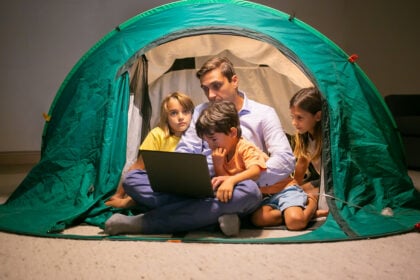Used is the new luxury. In 2025, flaunting a thrifted designer find or a vintage gem isn’t just eco-friendly—it’s a fashion flex. Secondhand shopping has evolved from a budget-friendly option to a bona fide status symbol.
🛍️ Thrifted Threads Take Center Stage
Gone are the days when secondhand shopping was solely about saving money. Today, it’s about making a statement. A recent report reveals that 41% of consumers now view secondhand purchases as a status symbol, with 76% noting a decline in the stigma associated with buying used items .
Platforms like ThredUp, Depop, and Vestiaire Collective are leading this transformation, offering curated selections of pre-loved fashion that appeal to both eco-conscious and style-savvy shoppers. The global secondhand apparel market is projected to reach $367 billion by 2029, underscoring the sector’s rapid growth .(ThredUp)
🌿 Sustainability Meets Style
The environmental impact of fast fashion has prompted many to seek more sustainable alternatives. Vintage clothing not only reduces textile waste but also conserves resources, as producing new garments requires significant water and energy .
By choosing secondhand, consumers are reducing the demand for new clothing production, which is resource-intensive. This shift is not only beneficial for the planet but also allows individuals to express their unique style through one-of-a-kind pieces.(Bounce Mkt)
💸 Economic Factors Fuel the Trend
With rising costs due to tariffs and economic uncertainty, consumers are turning to secondhand options for affordability without sacrificing quality. In fact, 59% of consumers plan to seek more affordable shopping options, such as purchasing items secondhand, in response to new government policies around tariffs making new apparel more expensive .
This economic shift has led to a surge in the secondhand market, with businesses like Thrift Vintage Fashion in Miami experiencing significant growth .(Business Insider)
📱 Social Media Amplifies the Movement
Social media platforms like TikTok and Instagram have become catalysts for the secondhand trend. Users showcase their thrift hauls, share styling tips, and promote sustainable fashion choices.
“Just scored a vintage Dior bag for $50 at a local thrift store. Sustainability never looked so chic! 🌿👜” – @EcoFashionista on TikTok
“Thrifting is the new black. Who needs fast fashion when you can have unique pieces with history? #ThriftedStyle” – @VintageVibes on X
“Every time I wear my secondhand finds, I get compliments. It’s like wearing a story. 💬👗” – @RetroQueen on Reddit
🧵 The Rise of Vintage Aesthetics
Fashion trends in 2025 are embracing the secondhand aesthetic, with oversized blazers and vintage accessories making a strong comeback. These pieces not only offer a nod to past styles but also align with the current emphasis on sustainability and individuality .
Designers are also reissuing popular designs from the 2000s, leveraging the emotional resonance of that era to engage Gen Z and millennial consumers. This nostalgia-driven approach further fuels the demand for authentic vintage pieces .(Vogue Business)
🛒 Top Secondhand Finds of 2025
- Vintage Designer Bags: Classic pieces from brands like Dior and Chanel are in high demand.
- Oversized Blazers: A staple in the secondhand fashion scene, offering versatility and style.
- Floral Maxi Dresses: Perfect for the garden party aesthetic that’s trending this year.
- Statement Accessories: Unique jewelry and handbags that add a personal touch to any outfit.
🔗 Related Reads
For more on the intersection of fashion and culture, check out our piece on quiet luxury: Quiet Luxury: The Low-Key Fashion Trend That Says Old Money
❓ FAQ
Q: Why is secondhand shopping becoming more popular?
A: Factors include environmental concerns, economic savings, and the desire for unique, personal style.
Q: Are secondhand items of good quality?
A: Many secondhand items, especially vintage pieces, are well-made and have stood the test of time, offering quality often superior to fast fashion.
Q: Where can I find secondhand luxury items?
A: Platforms like ThredUp, Depop, and Vestiaire Collective offer curated selections of pre-owned luxury fashion.
Q: How does secondhand shopping impact the environment?
A: It reduces textile waste, conserves resources, and decreases the demand for new clothing production, which is resource-intensive.









